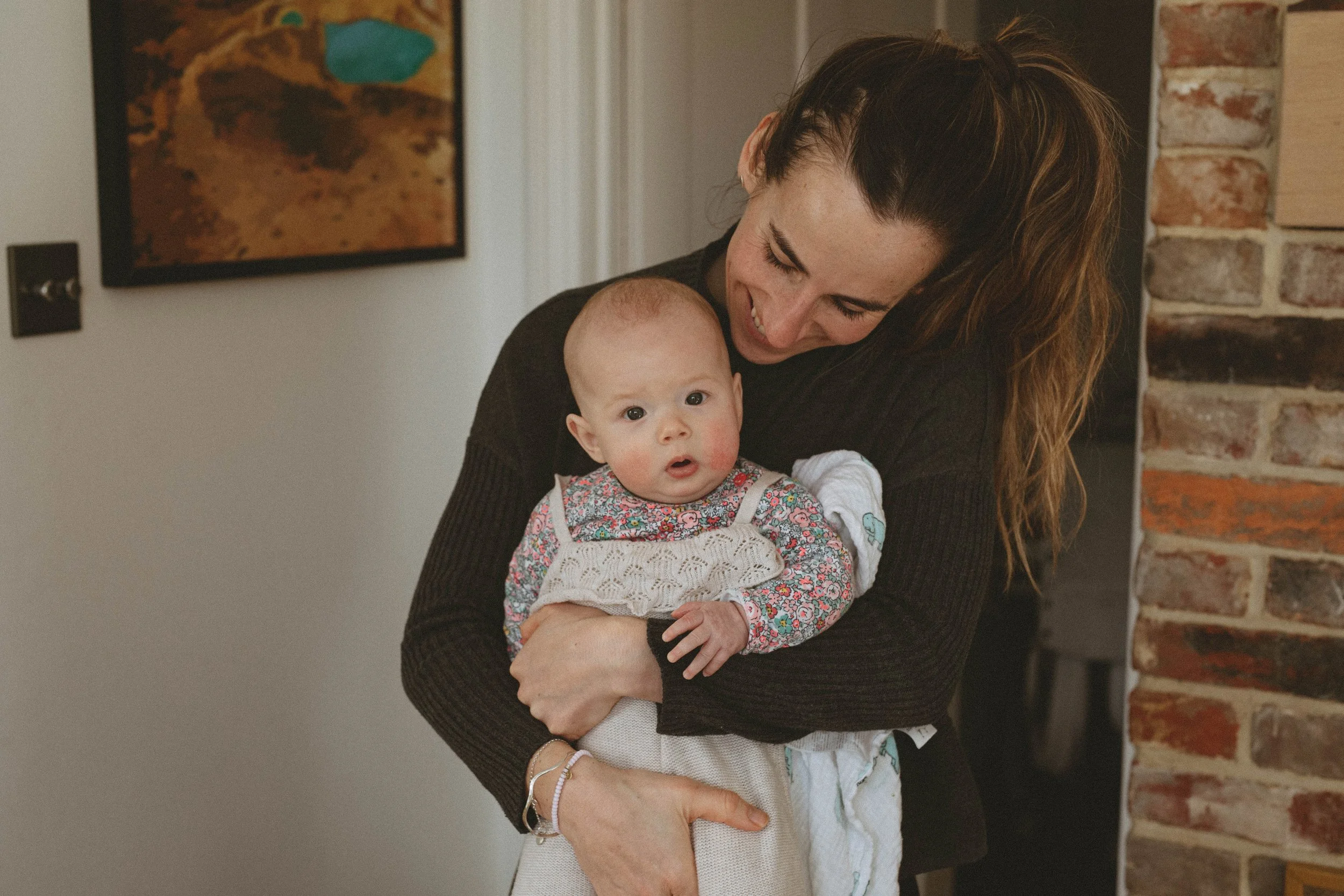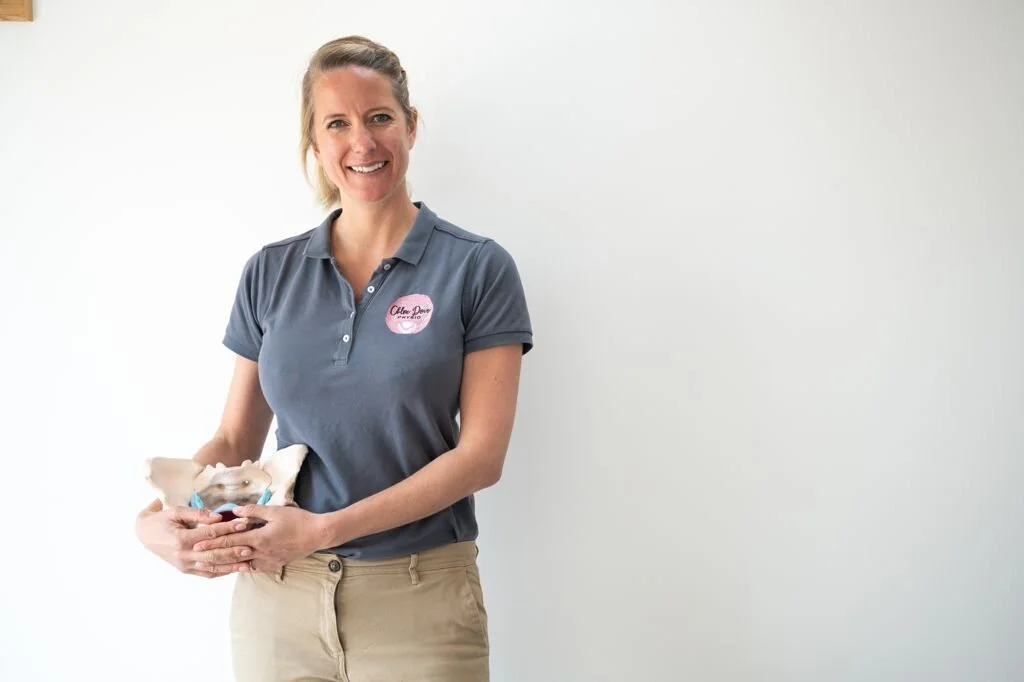RETURNING TO EXERCISE POST BABY
Have you recently had a baby but are feeling overwhelmed with the amount of conflicting information regarding post-natal exercise? In this latest blog post, Balance + Glo co-founder, Evelyn shares her top tips and introduces you to her new Postnatal Progressive Strength Series.
When can I return to exercise?
The standard guidance regarding returning to exercise is waiting till your 6-8 week GP check. Based on my own experience, I did not feel confident after the appointment that I was physically ready to start working out. As a result, I booked myself in with a Women’s Health Physio for a Mummy MOT. If you’re based on the Isle of Wight, I recommend booking yourself in with Chloe Dove. A Mummy MOT involves a physical assessment of your posture, pelvic floor and stomach muscles. At the end of the session you will be given a series of exercises to support your recovery and a safe return to exercise.
During my appointment Chloe identified that my pelvis was tucked and my ribs were flared - this is very common after having a baby. I also had some mild abdominal separation above my belly button and an overactive pelvic floor! Chloe gave me a series of exercises to work on in order to build connections and control, I left the session feeling informed and confident to start gently building back my strength.
Chloe Dove
Chloe is a Mummy MOT specialist and pelvic health physio. Chloe is also a mum of 2 beautiful girls and is passionate about promoting safe exercise during and after pregnancy with the hope this leads to a positive birth and post natal recovery.
On our online Bump + Beyond program Chloe leads educational classes on subjects like Pelvic Girdle Pain, Abdominal Separation and your Post Natal Body.
Discover Bump + Beyond >>Note: I arranged my appointment with Chloe privately, but if there is something you are specifically concerned about you can ask your GP to refer to you to a Women’s Health Physio on the NHS.
Prior to your 6-8 week check you can do some light postnatal exercise (providing you’ve had a healthy pregnancy and straightforward vaginal delivery). When I say light, I’m referring to short walks and gentle stretches. With walks gradually build pace, duration and frequency. Remember being a mum is also very physical and it’s tiring work (carrying your baby, picking your baby up and chasing other littles ones around if this isn’t your first baby), so just because your not doing a ‘workout’ in doesn’t mean your not moving your body.
Note: If you’ve had a C-section or a complicated pregnancy, ask your GP for advice in terms of timescales.
Why bouncing back is not a thing
Just because a GP has signed off on exercise, it doesn’t mean you can jump straight into a HIIT class or pick up the dumbbells you were used to using pre baby. I remember picking up my dumbbells for the first time post Romilly (to move them, not workout!), and finding them ridiculously heavy. It surprised me and I remembered thinking, I’ve got a lot of work to do here!
‘Bouncing back’ isn’t a thing and shouldn’t be a thing. Pregnancy and birth stretches and weakens your core. Your baby doesn’t just pop out and your core doesn’t just retract back to it’s pre-baby shape. Instead it needs time to heal and repair, and as much as it can be difficult to respond to the physical changes, they are a reminder of the amazing job your body has done in growing and birthing your baby.
Building back your strength takes time and should be done gradually to ensure sustainable progress. A drive to ‘bounce back’ can cause injury and actually regress your longer term fitness goals.
“Bouncing back isn’t a thing and shouldn’t be thing”
Tips for building back strength
Look at the bigger picture
It’s important to recognise that there are not just physical barriers to getting moving again. Poor sleep, fluctuating hormones, a lack of time (and unpredictability), and a lack of confidence to get moving again can all act as barriers.
That’s why it’s important to be realistic with what you can do, especially in the early days. If you only have 10 minutes, or you start a workout and have to stop because your baby needs you, then remember that this movement has still benefitted you. My new series has been designed with this in mind, short videos (10-15 minutes in length) with the option of doing one, two or three rounds.
Hydration
Make sure you stay hydrated particularly if you are breastfeeding.
Timing
If you are breastfeeding, I would recommend working out after you have fed your baby in order to maximise comfort.
You are your best teacher
Listen to your body, my new series is just a guide. Everyone is different and everyone’s journey to recovery will be different.
Contact a professional
Get a Mummy MOT either privately or through the NHS for a physical assessment of your posture, pelvic floor and stomach muscles
Take it slow
Gradually build back strength. In my new series, I provide options to progress the different exercises. Try the progressions when you feel ready. Each of the workouts can be repeated, giving you the option to progress at a time that’s right for you.
Rest is key
Don’t underestimate rest and recovery - not only does your body need time to physically recover post birth, you also need time to adapt to your new role.
Post Natal Progressive Strength Series
Below outlines the different episodes of my 5 part progressive strength post natal series on the Bump + Beyond Program. Each episode is between 10 and 15 minutes in length. If you need longer periods of rest, please pause the video and only complete additional rounds if your body feels ready.
Progressive Strength - 1
Starting with connecting to your breath, this first class will gently build movement back into your day. After a warming-up, Evelyn will take you through 4 exercises (arm raises, squats, static lunges, and glute bridges) to move the whole body. If you have the time and the movement feels good, continue for another 1 or 2 rounds.
Progressive Strength - 2
Starting with a warm-up before Evelyn takes you through 4 exercises for 2 rounds. If it feels good, and you have the time continue for a 3rd round. You will cover functional exercises and Evelyn will show you how to progress the movements.
Progressive Strength - 3
For this episode, Evelyn will take you through 3 rounds for 4 exercises. This is a more structured class where you will work for 40 seconds, before having a 20 second rest. Listen to your body, and hit pause if you require longer rest periods.
Progressive Strength - 4
Like Episode 3, Evelyn with take you through 3 rounds for 4 exercises, with an opportunity to take more advanced options as you move through the rounds (or alternatively when you repeat this workout). Listen to your body, and hit pause if you require longer rest periods.
Upper Stretch - 5
Join Evelyn for a short upper body stretch, focusing on the neck, shoulder and the back. As a new mum you may find yourself hunching over to feed and pick up your baby, give yourself this time to release tension and adjust your posture.
A pre + post natal program to support your overall well-being
The wellness series will guide you through both pre and postnatal exercises, yoga, meditations, breath work and educational videos from a field of experts including a qualified women’s physiotherapist to help you build confidence, gain strength and enhance positivity throughout pregnancy and beyond.
Whether you want to learn more about what your pelvic floor is or connect with your bump or baby through a mindful meditation, stretch out your body during pregnancy or rebuild your strength post birth Bump + Beyond is for all stages & phases of your journey.







